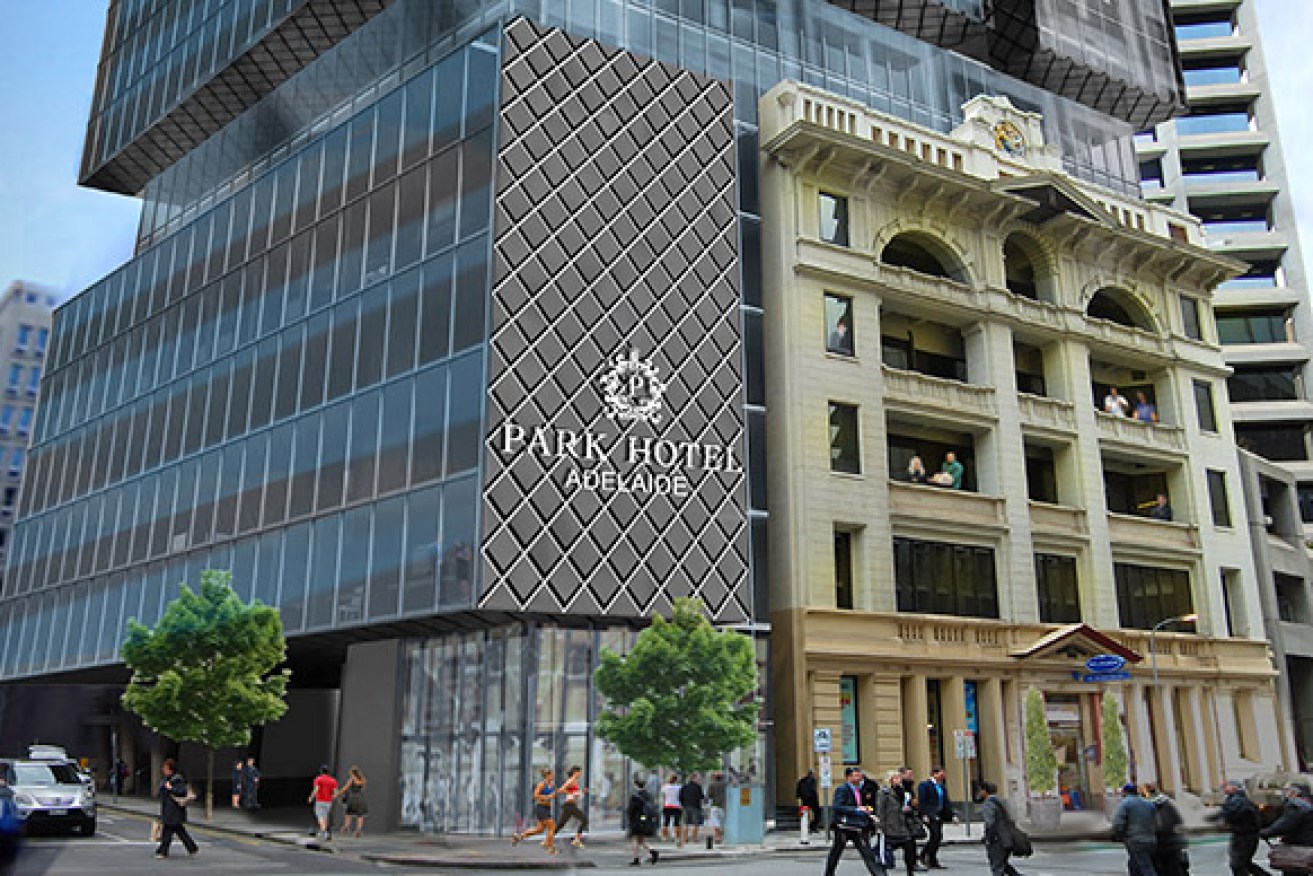Pay nothing for five years: city council offers rates reprieve to lure new residents
The Adelaide City Council has dramatically upped its pitch to attract new residents to the CBD, offering a five-year rates holiday to some new homebuyers.


A rendering of a hotel / apartment complex planned for Pirie Street.
The council passed a motion last night that will offer new owner-occupiers, who buy ‘off-the-plan’ dwellings or those adapted from run-down former office space, five years of rate-free living in Adelaide’s CBD.
The rates reprieve is contingent on the State Government reciprocating by contributing “measures of greater value”.
Deputy Premier John Rau told InDaily the Government supported the council’s move and was considering a range of initiatives to match it – though he said the “greater value” caveat was a “red herring”.
Area councillor Natasha Malani introduced the motion on behalf of Lord Mayor Martin Haese at last night’s meeting, arguing there were, increasingly, too many tenants and not enough owner-occupiers living in the city.
She said the measure could stimulate demand in the CBD apartment market and encourage the adaptive reuse of C- and D-grade office buildings to residential dwellings, as well as new development.
“We’re seeking to do our bit for population growth and … economic [growth],” Malani told the chamber.
“We have to be proactive to stimulate demand.
“There’s currently $2 billion of approved but yet-to-be-developed [residential buildings in the CBD].”
She said the initial hit to the council’s budget from the rates reprieve would be compensated over the long term if enough new residents purchased property in the city.
“The greater take-up we get of this … we get to increase our long-term revenue generation,” she said.
Lord Mayor Martin Haese told the meeting the idea was the result of a conversation with Rau about how the council and the government could improve the attractiveness of the city to new residents.
He said he asked Rau what the government could do, and Rau responded that he wanted to see what the council could do first.
“Largely, this has come out of a conversation with the Deputy Premier [John Rau] and myself,” Haese said.
“This is a… product of timing.
“The State Government would currently be contemplating their 2017-18 budget.”
Haese, who chairs council meetings and took the unusual step of speaking on the motion three times during the debate, argued that the strength of the initiative would mainly lie in what the Government comes up with in response.
“We’ll see what the Government reciprocates with,” he said.
Rau told InDaily this morning that: “We support what they [the council] are doing, absolutely.”
“I see that they’re taking an initiative to increase owner-occupier [numbers] in the city, which I welcome.”
He said a potential response from the government would be “regulatory”, “budgetary” or “administrative”.
“We’re looking at a range of measures.”
But he said he did not understand the element of the motion that made the rates holiday contingent on the State Government “implementing measures of a greater value”.
“‘Measure of greater value’ – I’ve got no idea what that means,” he said.
He argued that the council itself did not know how much the rates reprieve would cost – because it would not be able to predict the number of new homeowners willing to buy in the city – and that it was “impossible to reduce it to dollars and cents”.
“There will be further information on what the state intends to be doing with this in the coming weeks,” said Rau.
“I’m not in a position … to pre-empt what [will be contained in] the budget.”
The state budget will be released on June 22.
The five-year rates reprieve will only be on offer to owner-occupiers – not investors – and only if they buy within two years of the measure coming into effect.
Adelaide University PhD researcher Gillian Armstrong, whose thesis aims to discover why the owners of lower-grade office buildings often decline to adapt their building for residential use, told InDaily two years may be too short a period for adaptive reuse.
“There aren’t actually that many examples of C- and D-grade buildings [in Adelaide’s CBD] that have already been converted and are empty,” she said.
“[And] it takes a long time for any building to go though that process.
“I don’t think it [two years] is a sufficient … time-scale to have any effect.”
Armstrong said the problem of lower-grade office vacancy was not so much “a tenant or owner-occupier issue – it’s more getting the building owners to commit to change-of-use”.
She added that the two-year time-frame may also minimise any extra up-take of new off-the-plan dwellings – those which have yet to be built – as a result of the policy.
However, Rau said he agreed with the two-year window.
“We need these people to make a decision … sooner or later and get on with it,” he said.
“It you don’t set a time limit … then people will put off making the decision.”
The city council’s target is 50,000 residents living in the CBD by 2040.
According to the council’s administration, new residential development accounted for about 65 per cent of all new development (by value) in the CBD and North Adelaide in 2016-17, generating $620,000 in rates revenue that year.
The majority of that development was in multi-storey apartment buildings.




